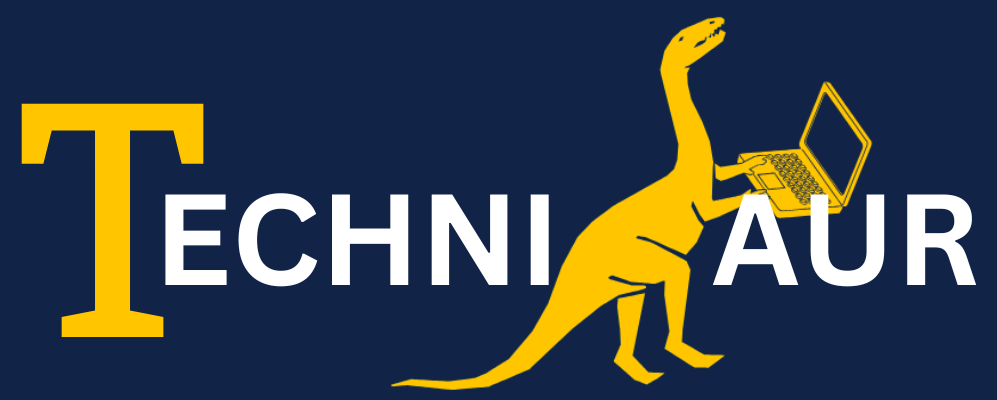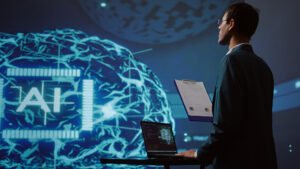How AI Is Transforming Cybersecurity AI is already changing industries, increasing productivity, and completely changing how we live and work; it is no longer just a sci-fi idea. The impact of AI is particularly noticeable in the field of cybersecurity.
AI is probably protecting your data in ways you aren’t even aware of, whether you are an IT professional, business owner, or regular internet user. At the same time, it is enabling some of the most deadly cyberthreats available.
Let’s explore the positive, negative, and inevitable ways AI is changing cybersecurity.
The Good: How AI Strengthens Cyber Defense
AI is transforming cybersecurity by serving as a watchful digital protector. More quickly than any human team, it can identify irregularities in real time and report questionable conduct. AI-powered solutions like machine learning and behavioral analytics help security teams stay ahead of fraudsters by evaluating billions of data points and anticipating possible risks before they materialize. AI is a strong ally in protecting digital infrastructure since automated threat response also results in quicker containment and less damage.
1. Identification of Anomalies and Threats
Conventional cybersecurity technologies can only detect threats they have already seen because they mostly rely on rule-based detection and known signatures. The game is altered by AI.
AI-powered computers examine vast amounts of data in real time using machine learning techniques. They become aware of what constitutes “normal” network behavior and report any suspicious activity, such as odd login times, illegal access attempts, or unexpected data transfers.
This type of behavioral analysis is very helpful in identifying insider assaults and zero-day threats, two types of attacks that are frequently missed by traditional methods.
2. Threat Response Automation
In cybersecurity, time is of the essence. The potential harm increases with the amount of time a threat is ignored or treated. AI-driven automation is revolutionary because of this. Artificial intelligence (AI) is being used by modern security solutions to automatically isolate compromised devices, block malicious IPs, or end suspect user sessions, all without the need for human interaction. In addition to reducing response times, this frees up security professionals to concentrate on more strategic tasks rather than battling flames all day.
3. Email Filtering and Phishing Detection
Phishing is still one of the most widely used attack techniques. Human error is difficult to totally eradicate, and hackers are becoming more adept at making bad emails appear authentic.
By reading emails, examining linguistic trends, and seeing minor indications of phishing even when conventional filters might overlook them, AI helps lower this danger. These days, a lot of business email systems use AI to proactively reject questionable emails before they ever get to an inbox.
4. Intrusion Prevention and Network Security
Because AI is always learning and adapting, it improves network security. Intrusion detection systems (IDS) with AI capabilities, for instance, can monitor enormous volumes of network data and identify irregularities with remarkable precision.
These AI solutions provide significantly more reliable and scalable protection than traditional systems that depend on static rules because they can adjust to new threats as they arise.

The Negative: The Use of AI by Cybercriminals
Not only are cybersecurity experts using AI, but fraudsters are also taking advantage of it. And that’s when the terrifying part begins.
1. Phishing Attacks Generated by AI
Phishing emails have been much improved. AI is already being used by cybercriminals to create hyper-personalized phishing messages that frighteningly accurately imitate tone, style, and even logos.
Some artificial intelligence (AI) technologies may scrape public data and social media to create messages that look frighteningly real, deceiving even tech-savvy users into disclosing private information or clicking on dangerous links.
These attacks pose a greater threat than ever before since they are not only more realistic but are also created in large quantities.
2. Voice cloning and deepfakes.
You have likely seen deepfake videos on the internet, which are fake recordings in which a person pretends to say or do something they never did. However, the ramifications extend beyond false information and memes.
Deepfakes are being used by cybercriminals for impersonation, social engineering, and CEO fraud. Suppose you get a voicemail or video call that sounds and appears like your employer approving a bank transfer. It’s happening right now, so it’s not science fiction.
Attacks of this nature make it difficult to distinguish fact from fiction and present a whole new authentication problem.
3. Malware Enhanced by AI
Malware is now clever code rather than just code. Cybercriminals are creating malware that employs AI to avoid detection, adapt to changing conditions, and learn from feedback from the environment.
In order to avoid causing suspicion, several malware strains can now recognize whether they are operating in a virtual sandbox, which is used for analysis, and alter their behavior accordingly. Others are able to automatically modify their approaches according to the systems they come across. To put it briefly, AI increases the intelligence, stealth, and destructiveness of malware.
AI is here to stay, which is inevitable.
AI is becoming a permanent feature in the cybersecurity scene, whether we like it or not. The distinction between offensive and defensive AI is becoming increasingly blurred, and it is already influencing everything from threat hunting to attack development. There are some harsh realities associated with this reality:
- AI cannot be disregarded. You’re falling behind if your company isn’t already incorporating AI into its cybersecurity plan.
- Human knowledge is still important. Although AI is strong, it is not flawless. It requires knowledgeable cybersecurity specialists to supervise, mentor, and train it.
- The threat landscape is changing more quickly than before. It’s possible that what worked last month or even last year won’t work today. For this reason, lifelong learning is essential.
Why Upskilling in Cybersecurity Is Not Negotiable
The bottom line is as follows: AI is not slowing down and is changing cybersecurity in both positive and negative ways. As a result, those protecting our systems must step up immediately. Upskilling in cybersecurity is essential for anyone hoping to enter the field, whether they are a student, an IT professional, or a company leader attempting to prepare their staff for the future. This is where TechniSaur is useful.
Upskill with TechniSaur, Your Cyber Readiness Partner
At TechniSaur, we think that a trained intellect makes the best protection. Our programs are made to keep you ahead of threats, whether they are AI-powered or not.
We provide:
- Practical AI cybersecurity classes
- Real-world simulations and labs
- instruction in cloud security, threat intelligence, ethical hacking, and other areas
- Credentials that will make you stand out in a crowded job market
TechniSaur gives you the confidence you need to develop into more senior positions or begin your cybersecurity career.
Final Thoughts
Cybersecurity is being revolutionized by AI. We can identify risks more quickly, react more intelligently, and safeguard data more successfully than ever before because to it. However, technology is also providing hackers with new tools that are more harmful every day, faster to deploy, and more difficult to detect. The only path forward? Adjust. Learn and improve your skills. Don’t wait until your personal information or company is compromised. Give your team and yourself the tools you need to combat dangers driven by AI. With TechniSaur, begin your cybersecurity adventure right now. Because the future is now here, not just coming.
Frequently Asked Questions (FAQs)
1. How does AI aid in cyberthreat defense?
In identifying threats more quickly and precisely than with conventional techniques, AI is improving cybersecurity. It analyzes patterns, instantly identifies abnormalities, automates threat responses, and even blocks phishing emails before they get to your mailbox using machine learning. By being proactive, attacks are prevented before they have a significant negative impact.
2. In what ways do cybercriminals employ AI in their attacks?
AI is increasingly being used by hackers to make their attacks more realistic and difficult to identify. To pose as reliable people, they produce deepfake videos, voice clones, and incredibly lifelike phishing emails. Some even create malware with artificial intelligence (AI) that can alter its behavior and evade detection by conventional security solutions.
3. Do voice cloning and deepfakes pose a cybersecurity risk?
Of course. Attackers utilize deepfakes and voice cloning in impersonation frauds, such as CEO fraud, to fool staff members into sending money or disclosing private information. A growing cybersecurity danger, these AI-generated forgeries are lifelike enough to evade optical and auditory inspections.
4. Is it possible for AI to fully replace human cybersecurity experts?
No. AI is a useful tool, but it’s not flawless. Training AI systems, deciphering complex threats, and making strategic judgments still require human skill. AI helps and improves cybersecurity initiatives, but it cannot take the place of qualified experts.
5. What are the benefits of upgrading my cybersecurity skills, and how might TechniSaur assist?
The cybersecurity landscape is evolving quickly as AI continues to advance. You can stay ahead of the game and learn how to use and protect against AI by upskilling. With its practical, hands-on courses in ethical hacking, threat intelligence, AI-powered cybersecurity, and more, TechniSaur gives you the tools you need to be successful in this in-demand industry.








